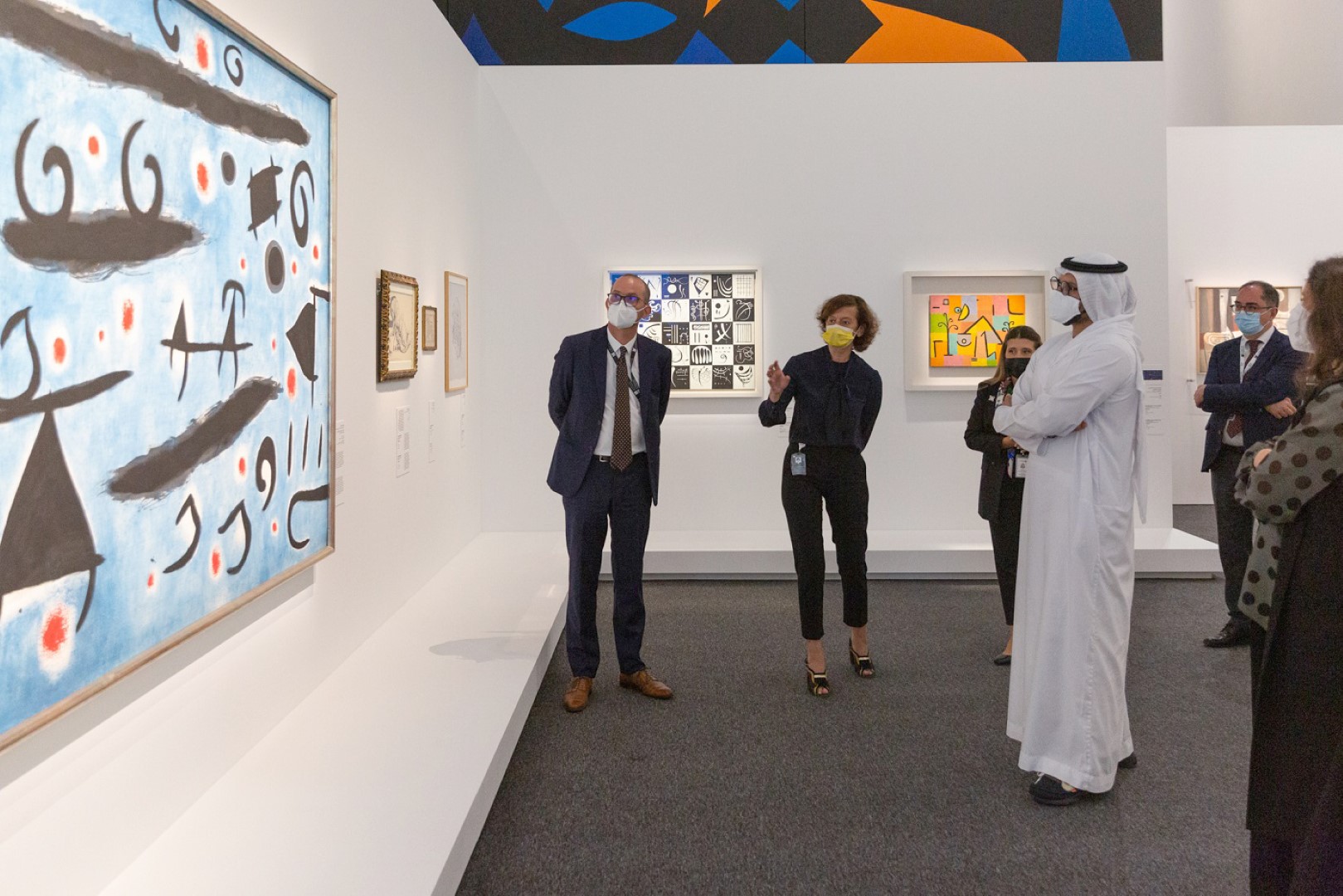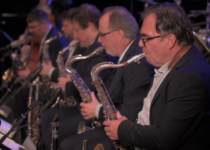Louvre Abu Dhabi’s first international exhibition of 2021, Abstraction and Calligraphy – Towards a Universal Language, from 17th February to 12th June, 2021, invites visitors to explore the dawn of modern abstraction through sign and symbol, tracing origins to Asian and Arabic calligraphy and charting sites of mutual inspiration around the world.
Curated by Didier Ottinger, assisted by Marie Sarré, the exhibition marks a second major collaboration between the Centre Pompidou and Louvre Abu Dhabi. This international exhibition is sponsored by Montblanc, a Maison whose innovative craftsmanship continues to influence the culture of writing.
Bringing together more than 80 masterworks on loan from 16 partner institutions, with six works from Louvre Abu Dhabi’s permanent collection, the exhibition will showcase how 20th-century abstract artists including Paul Klee, André Masson, Wassily Kandinsky, Cy Twombly, Lee Krasner, and Jackson Pollock felt the need to establish a new universal, visual language that was inspired by calligraphy. The show will also focus on 20th and 21st-century Arab artists, from Dia Azzawi and Anwar Jalal Shemza, to Ghada Amer, Shirazeh Houshiary, Mona Hatoum and others. The exhibition will also feature installations from two contemporary artists, eL Seed and Sanki King.
Sincere thanks goes to each of the lending institutions for this exhibition: Centre National d’Art et de Culture Georges Pompidou, Musée du Louvre, The Guggenheim Abu Dhabi, Musée de Grenoble, Centre National des Arts Plastiques, The Adolph and Esther Gottlieb Foundation, The Pollock-Krasner Foundation, Inc., Administration Jean Matisse, eL Seed Studio, Musée Municipal de Saint Germain Laval, Galerie Michael Werner, Märkisch Wilmersdorf, Galerie Jeanne Bucher Jaeger, Galerie Jacques Bailly, The McKee Gallery, Mona Hatoum Studio, and noirmontartproduction.
Mohamed Khalifa Al Mubarak, Chairman of the Department of Culture and Tourism – Abu Dhabi, remarked, “Once again, the museum offers its audiences not only the highest quality of artworks but an innovative curatorial vision. The masterworks in Abstraction and Calligraphy, some on display in the region for the very first time, are exceptional for many reasons. Not only because they have been crafted by some of the world’s most celebrated artists, but because they tell stories of discovery and inspiration across time, cultures and geographies.”
Manuel Rabaté, Director of Louvre Abu Dhabi, said, “We are emerging from the very difficult past year of 2020, and it is a pleasure to invite the great curator Didier Ottinger to explore the relationship between abstraction and calligraphy, two visual languages, intimately entwined. Louvre Abu Dhabi will offer audiences an exploration of a universal language through pictograms, signs, symbols, lines, and other traces of the hands of the artists. This second major collaboration with Centre Pompidou brings their abstract masterworks of Cy Twombly, Lee Ufan, Wassily Kandinsky, Henri Michaux, Juan Miró, Christian Dotremont, Jean Dubuffet, André Masson, and Nasser Al Salem, to Abu Dhabi for the first time.”
Curator of the exhibition, Didier Ottinger, Deputy Director, Cultural Programming, MNAM-CC, commented, “Exchanges and dialogue characterise the project I developed for Louvre Abu Dhabi dialogues between spaces and times that are embraced by the Universal Museum; a dialogue between images and letters, illustrated by the mutual fascination between calligraphy and image-makers, and vice-versa; dialogue in the space between the artists of East and West, dialogues that bring together an ancient Egyptian stele and the ‘pictograms’ of a New York street artist the shared dream of a universal language.”
Dr. Souraya Noujaim, Scientific, Curatorial and Collections Management Director at Louvre Abu Dhabi, added, “This exhibition opens the third cultural season of Louvre Abu Dhabi, which is devoted to ‘East–West’ exchanges and explores the remarkable avenues and voices that have characterised the creativity of both. Beyond the limits of immediate sensory experience, in an environment where letters are present everywhere in declamation, calligraphy and graffiti, Asia and North Africa were intuitively experienced as an essential model.”
The exhibition is organised in four sections, with the first focussing on pictograms, symbolic figurative images that represented ideas in ancient civilisations such as Mesopotamia and Egypt, and the way they inspired abstract artists. The second chapter explores signs that in the history of writing, took over from pictograms, breaking writing’s attachment to imagery. The third section will be devoted to lineaments, revealing how Western artists incorporated the energy of Eastern calligraphy in their brushstrokes to produce free and fluid lines. Concluding the exhibition, calligraphy focuses on the ways artists and poets around the world, from Brion Gysin and Henri Michaux to Shakir Hassan Al Said and Sliman Mansour, incorporated calligraphic signs in their practice.







